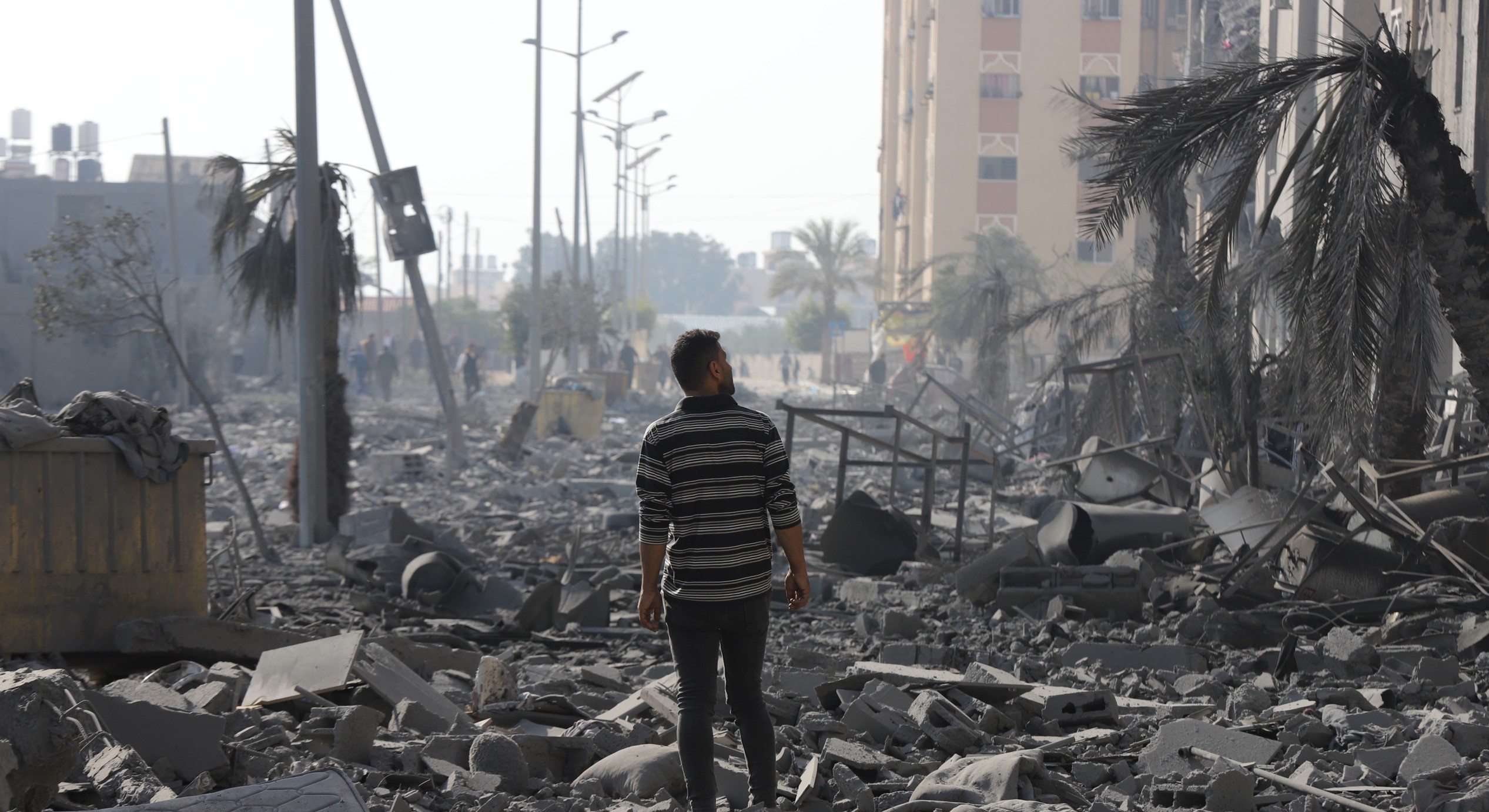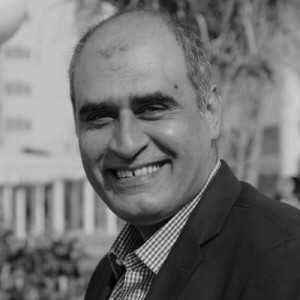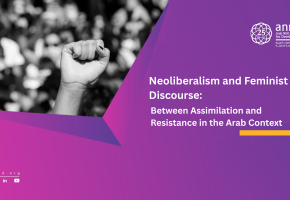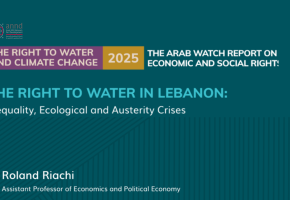

CSOs in Gaza and the Continuing Humanitarian
Crisis - Amjad al-Shawwa
An
unprecedented humanitarian disaster has affected all aspects of life in the
Gaza Strip, including killings, destruction, starvation, and thirst, forcing
more than 90% of the population of the Gaza Strip to flee more than once and
depriving them of the most fundamental rights and essential humanitarian
services, amid the international community's inaction and silence towards the
crimes of genocide committed by the Israeli occupation against Palestinian
civilians.
One cannot
think too much about the details; one must respond quickly and without delay.
Despite the cries of Palestinian citizens surrounded by the rubble of homes
targeted by the Israeli occupation, the response happened, but with the lack of
capabilities and the risks to which civil defense personnel, civil defense
crews, ambulances, and relief workers were exposed. The number of martyrs in
the Gaza Strip rose to more than 60 thousand, 70% of whom were children and
women, in addition to one hundred and ten thousand injured and the destruction
of about 80% of homes, institutions, and infrastructure.
Since the
beginning of the Israeli aggression on the Gaza Strip, one of the first
decisions of the War Council in the occupation government was to stop the
supply of food, medicine, electricity, and water. It began displacing the
population from their homes from the north to the south of Gaza amidst violent
bombing of various parts of the Strip. There was no safe place to seek refuge.
Thus Begins the Journey of
Pain and Suffering for the Residents of Gaza
Palestinian
civil society organizations were the first responders in providing relief
services to the Palestinians, including health and medical services through
their hospitals, clinics, and crews. They moved between shelters and medical
points spread throughout the various areas of the Strip to contribute to
healing wounds and treating patients. They also provided food, water, personal
hygiene materials, women's needs, clothing, psychological support programs for
children and women, and programs to support people with disabilities. They
monitored and documented the legal and other violations by the Israeli
occupation.
With the
worsening humanitarian situation due to the occupation imposing restrictions on
the entry of food aid and storming hospitals in Gaza City and the northern Gaza
Strip, several children died of malnutrition. In response, Palestinian CSOs
worked alongside UN agencies to provide what they could to alleviate the
suffering of citizens.
Every day
reveals more horrors of the humanitarian catastrophe experienced by our people
as a result of the Israeli aggression during the past fourteen months. But
there are also models of steadfastness by the people under continuous shelling,
closure of crossings, and the prevention of all humanitarian aid.
Since the
beginning of the aggression, CSOs have faced difficulties in their work due to
the lack of transportation, communications, fuel, and continuous power and
internet outages. However, despite the displacement of most employees, they
have worked to establish new centers for them in the displacement areas. They
have also taken the initiative to coordinate with all humanitarian agencies
working in the Gaza Strip to continue performing their mission and services.
Several
institutions responded by converting their headquarters into centers to
shelter, host the displaced, and provide all their available capabilities to
serve them. Some institutions also provided cash assistance to displaced women
in the Gaza Strip, cooperating with international institutions and banking and
exchange service providers.
Many civil
society organizations also distributed food parcels with nutritional value of
fresh and canned vegetables and non-food items. They supported the purchase of
winter clothes for displaced persons in the Gaza Strip. They also provided
shelter materials such as mattresses and blankets to cover the various needs of
displaced groups of citizens in light of the high prices and scarcity of these
materials in the markets. Job opportunities were provided for graduates to
enhance their ability to withstand and confront the deteriorating economic
conditions due to the ongoing war and siege.
Numerous
Palestinian CSOs established community kitchens (tekiyat) to distribute hot meals, especially during the holy month
of Ramadan, which came amid the intensification of the starvation crisis and
the occupation's attack on people all over the Strip.
Services were
not limited to relief and food. The scope of service provision expanded to
include people with disabilities and children and to provide all possible
assistance to people with disabilities, including amputees. Organizations
working in the rehabilitation sector provided wheelchairs for people with motor
disabilities, hearing aids and batteries for people with hearing disabilities,
and other assistance that enables people with disabilities to deal with the
crisis.
The role of
CSOs and their staff was apparent in health services and emergency medical
assistance to support the people's steadfastness. They worked in unimaginable
conditions as the occupation authorities threatened their medical staff to make
them leave their centers. However, they remained with their patients, providing
medical services. There are several examples of medical staff refusing to leave
their service stations for weeks.
In the area of
protection, most institutions worked to provide psychological and social
support to all groups, especially women and girls with and without
disabilities, and to distribute dignity kits to them. They organized community
protection committees targeting displacement and shelter communities, aiming to
gain a more comprehensive and deeper understanding of the needs of the
displaced in various sectors and to share these needs with stakeholders to
reach a flexible and dignified humanitarian response amid the ongoing crisis
even after the announcement of the ceasefire stages.
CSOs also held
many training programs and courses on "psychological first aid" for
service providers and psychologists in shelter centers. They distributed
information on communication and reporting of protection problems in
displacement centers.
In education,
some institutions have launched initiatives in tents and schools that have
transformed into shelters. They implemented educational and recreational
activities through temporary learning spaces established in displacement sites.
In the field of
human rights and advocacy, many CSOs issued statements, special reports, and
fact sheets that document the violations of the Israeli occupation army against
Palestinian citizens, including journalists, patients, doctors, ambulance
workers, civil defense workers, and detainees.
These
organizations called on the international community to take immediate and
effective measures to ensure that international investigative mechanisms are
granted to investigate crimes and violations committed by the Israeli
occupation army and to work to activate the role of international oversight in
light of the increasing risk of further human rights violations occurring
without deterrence, which reinforces the cycle of violations and impunity.
Now, with the
ceasefire and the return of the displaced from the south to the north of the
Gaza Strip, more horrors of the aggression and lack of capabilities are
revealed. However, CSOs can continue to work to provide all possible services,
including health care services, transportation, and the necessary awareness to
avoid the dangers resulting from unexploded ordnance and ensure safe return.
The Palestinian
NGO Network (PNGO) also continues to coordinate with all local and
international actors to ensure that humanitarian aid reaches the displaced and
those returning to their destroyed homes. During the coming period, we will
establish several comprehensive service centers for Palestinian citizens to
ensure easy access to services and obtain them with dignity and equality.
It will also
work on providing workspaces for CSOs that have lost their headquarters and
facilities, enabling them to continue performing their humanitarian and
societal missions.
Finally, efforts at this stage must be focused on providing shelter, water, food, and necessary medical supplies to the displaced and returnees living in difficult humanitarian conditions. Intensive work is being done to provide tents for the displaced in the northern areas of the Gaza Strip while continuing to distribute food aid to meet the needs of affected families through relief teams affiliated with CSOs deployed on the ground in an attempt to alleviate the suffering in these exceptional circumstances in which the percentage of destruction has reached more than 80% of homes and infrastructure. CSOs are now planning for the next stage related to restoring life and rebuilding Gaza.
Recent publications

Neoliberalism and Feminist Discourse: Between Assimilation and Resistance in the Arab Context
